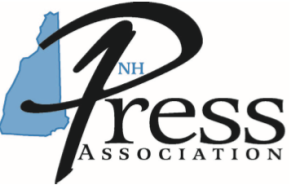
Back in the early 1980s, I was asked to photograph the release of caged pheasants down on a corn meadow in Orford. It was a chilly October morning, and the New Hampshire Fish and Game crew had many cages of birds they released so hunters could then come down onto the meadows, find them, and shoot them.
The program was popular with some hunters who would follow the pheasant trucks around, and when the Fish and Game crews left the area for another site, the shotgunners would move in and start blasting. On release days, I did not see much sport in hunters who followed the trucks and hung around the release area until the Fish and Game personnel shooed them away. Now, hunting a release site cannot begin until the afternoon of the release day, giving the birds a few hours to find some underbrush and hide out.
According to New Hampshire Fish and Game program statistics, through October, they have released about 10,000 adult ring-necked pheasants at 62 sites in 41 towns across the state. The release sites include public and private lands. There are several release sites in the areas of Haverhill, Orford, and other towns up and down the meadowlands adjacent to the Connecticut River. The program is popular with some hunters, but I had heard grumbling about the release pheasant program ever since, especially from one officer who pulled me aside during the Orford release session to tell me about an exciting program he was involved in. He said it was a turkey reintroduction program that would bring the wild turkey back to the Granite State after an absence of more than 100 years.
His name was Ted Walski, a NH Fish and Game biologist and a loyal employee with the department for 47 years, joining them in 1972. He and I became friendly as he worked on his wild turkey program, which in a short time became a total success. He was their official wild turkey biologist until he retired in 2019.
His program took about 10 years to establish, but the first turkey hunt took place in 1980 and became wildly popular as turkeys spread throughout the Granite State, thanks to the work and leadership of Ted Walski.
So, as Walski worked to spread turkeys around New Hampshire, the National Wild Turkey Federation was right there to assist in this vital program. Today, after a start with just a few birds, the program has estimated there are as many as 50,000 turkeys in New Hampshire.
Across the Connecticut River in Vermont, their program was growing fast. Wild Turkeys in Vermont had also disappeared due to habitat loss and a lack of regulations. According to Vermont wildlife officials in 1969 and 1970, the Green Mountain State’s turkey population sprang from just 31 wild turkeys that were let go in southwestern Vermont by the Fish and Wildlife Department.
As in New Hampshire, the turkeys were transported to other parts of the state, and soon the program had established a population that kept on growing in Vermont’s forests, which had become capable of sustaining a large number of wild turkeys in the range of 50,000 that are now being hunted during Vermont’s turkey hunting season.
Vermont is pleased with its wild turkey program. They note in their official state literature that Vermont boasts the best wild turkey hunting in New England. They are proud of their wild turkey hunting program, noting that “Considered ‘Big Game’ under Vermont law, you will easily understand why after hunting them. Flocks of up to 100 can be counted in late winter, and they are highly visible most of the year. But when hunting season comes in May, their prowess in avoiding the hunter puts them way ahead of any small game species and certainly on a par with deer and bear.”
Have a story?
Let's hear it!
(802) 757-2773
(603) 787-2444
news@thebridgeweekly.com




